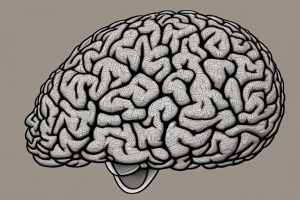
User Experience (UX) design is not solely about creating visually appealing interfaces; it’s also about crafting experiences that resonate with users on an emotional level. Understanding human psychology and incorporating emotional elements into UX design can significantly enhance user engagement, satisfaction, and loyalty. In this article, we will explore the concept of designing for emotional impact and how to leverage psychology to create more meaningful user experiences.
The Power of Emotional Impact on UX Design
Emotional experiences significantly influence user behavior and perception. While usability and functionality are crucial, emotional design plays a critical role in forming strong connections between users and digital products or services. Research shows that emotionally engaged users are more likely to spend more time on the platform, interact with various features, and return for future visits.
The emotional impact can have several potential implications and consequences for various stakeholders involved in the design and user experience process:
User Engagement and Satisfaction
Designers who incorporate emotional elements into their designs can create experiences that captivate users and keep them coming back to the product or service. By eliciting positive emotions, such as joy, surprise, or empathy, designers can increase user engagement and overall satisfaction.
Brand Loyalty and Perception
Positive emotional experiences foster a strong emotional connection between users and a brand. When users have emotionally satisfying interactions with a product, they are more likely to develop loyalty to the brand, leading to repeat business and positive brand perception.
Word-of-Mouth Marketing
Delightful and emotionally impactful experiences can motivate users to share their positive experiences with others. Word-of-mouth marketing can lead to organic growth and attract new users to the product or service.
Competitive Advantage
Emotional design can set a product apart from its competitors by creating a unique and memorable experience. In a crowded market, a well-crafted emotional design can become a differentiating factor.
User Retention and Reduced Churn
Emotional connections with a product can result in higher user retention rates and reduced churn. Users who feel emotionally attached to a product are less likely to switch to competitors.
Ethical Considerations
While emotional design can be powerful, there are ethical implications to consider. Designers must ensure that emotional triggers are used responsibly and not manipulatively, respecting users’ autonomy and privacy.
Impact on Conversion and Revenue
Emotional design can also impact conversion rates in e-commerce and other online platforms. By evoking positive emotions during the user journey, designers may increase the likelihood of users completing desired actions, such as making a purchase.
Understanding Emotional Triggers
To design for emotional impact, UX designers must understand the different emotional triggers that influence users. Some common emotional triggers include:
Empathy
Demonstrate empathy by understanding users’ pain points and needs. Addressing these concerns in the design can make users feel valued and understood.
Delight
Incorporate delightful elements, such as animations, surprise rewards, or personalized interactions. Delightful experiences trigger positive emotions, leaving a lasting impression on users.
Trust
Build trust through transparent communication, security features, and intuitive design. Trust is a fundamental emotion that forms the basis of a strong user-product relationship.
Familiarity
Create designs that feel familiar and intuitive to users. People are more likely to feel comfortable with products that resonate with their existing mental models.
Personalization
Tailor the user experience to individual preferences and behaviors. Personalized experiences make users feel valued and increase their emotional connection with the product.
Techniques for Designing Emotional Impact
To leverage psychology in UX design and create emotional impact, consider the following techniques:
Storytelling
Integrate storytelling elements into the design to evoke emotions and create a narrative that users can connect with. Use visuals, animations, and interactive elements to tell a compelling story.
Color Psychology
Colors can evoke specific emotions. Understand color psychology and use appropriate color schemes to elicit the desired emotional responses from users. However, be mindful of cultural differences in color associations.
Microinteractions
Pay attention to micro-interactions, such as button animations or sound effects, that add personality and emotional depth to the user experience.
Social Proof
Incorporate social proof, such as user reviews and testimonials, to create trust and a sense of community around the product.
Emotional Feedback
Design interfaces that provide immediate and meaningful feedback to users’ actions, making them feel empowered and in control.
Addressing Negative Emotions
While designing for positive emotional impact is essential, it’s equally crucial to address and mitigate negative emotions in the user experience. Understanding how to handle user frustration, disappointment, or anxiety in design is vital for overall user satisfaction and retention.
Measuring Emotional Impact
Measuring emotional impact is challenging but essential for evaluating the success of emotional design efforts. Designers can utilize a combination of qualitative research, user feedback, and emotional testing to gauge users’ emotional responses to the product.
Cross-Cultural Considerations
Emotional triggers can vary across cultures, and what evokes a particular emotion in one culture might not have the same effect in another. Designers should be aware of cultural nuances when incorporating emotional elements into the design. Conducting cross-cultural user research can help understand the emotional needs of diverse audiences.
Balancing Emotions with Functionality
Designers must strike a balance between the emotional impact and functional aspects of a product. While emotional design can enhance user engagement, it should not compromise the usability and functionality of the product. The emotional elements should complement the core features of the product, rather than overshadowing them.
Long-Term Emotional Impact
Designing for long-term emotional impact involves maintaining and reinforcing emotional connections with users over time. Regular user feedback, updates, and ongoing user research can help designers identify opportunities to strengthen emotional connections and adapt to changing user needs.
In conclusion, designing for emotional impact is a crucial aspect of UX design that can lead to increased user engagement, brand loyalty, and competitive advantage. However, designers must approach emotional design responsibly, considering ethical considerations, cultural sensitivity, and the need for a balanced user experience. By leveraging psychology and incorporating emotional elements into the design, UX designers can create meaningful, memorable, and delightful user experiences that resonate with their target audience.
If you’re a start-up or small business looking to develop high-quality software products quickly and efficiently, Striano is here to help.
Our passionate team of experts specializes in software development and can design sophisticated IT solutions that meet your unique requirements. Don’t let the pressure of competition and time-to-market hinder your success.
Contact us today to see how we can help take your business to the next level!






